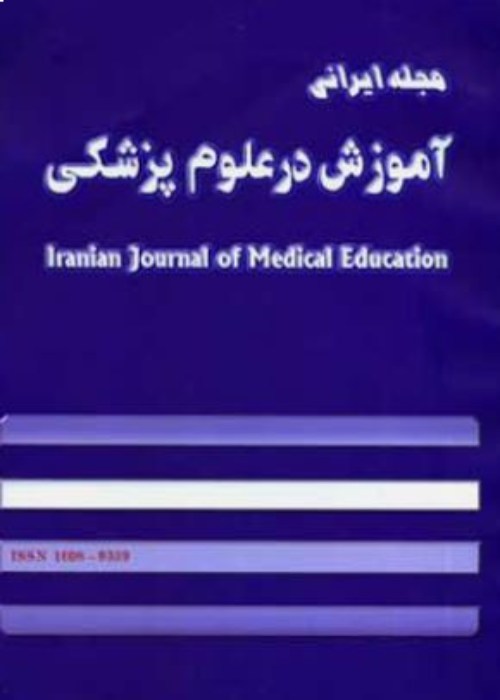Cross-Cultural Competence, an Unknown Necessity in Medical Sciences Education; a Review Article
Author(s):
Abstract:
Introduction
Cross-cultural competence as a core component in professionalism has a unique role in medical sciences due to cultural diversity clients (especially university students and patients). Despite its importance, yet many aspects of this competence are unknown in our country. Therefore this paper presents a review of cultural competence, its significance in the medical community, and its position in Iran as well as how it is assessed and educated. Methods
In this review article, we searched in library and electronic resources such as Sceince Direct, Magiran, SID, PubMed, and Proquest. Keywords used were cross-cultural competence, assessment, education, and faculty members, both alone and in combination. All documents were reviewed. Then relevant documents were selected and the related content and information were extracted.Results
Out of 131 investigated articles in total, documents of 67 relevent and credible articles were obtained. With regard to the diversity of the aspect of this subject, articles were classified in three categories of “importance of cultural competence”, “cultural competency education,” and “cultural competency assessment”. Cultural competence is a set of congruent behaviors, attitudes, and policies that come together and enable the person to work effectively in cross-cultural situations. In the care area, there is an obvious link between the cultural competence, quality improvement, health outcomes enhancement, and elimination of ethnic inequalities. In the education area, a culturally competent school is a place wherein new opportunities are provided for students in support of individual development as well as different cultural groups. Therefore medical educators must have multicultural attitude, behavior, and knowledge to help different types of clients (especially students and patients) appropriately. Conclusion
Since cultural variables are affected by various factors in our country, it is necessary to investigate this phenomenon in our own cultural setting. Moreover, a comprehensive plan must be developed for its educational strategies and assessment among faculty members and students.Keywords:
Language:
Persian
Published:
Iranian Journal of Medical Education, Volume:14 Issue: 2, 2014
Pages:
122 to 136
magiran.com/p1265076
دانلود و مطالعه متن این مقاله با یکی از روشهای زیر امکان پذیر است:
اشتراک شخصی
با عضویت و پرداخت آنلاین حق اشتراک یکساله به مبلغ 1,390,000ريال میتوانید 70 عنوان مطلب دانلود کنید!
اشتراک سازمانی
به کتابخانه دانشگاه یا محل کار خود پیشنهاد کنید تا اشتراک سازمانی این پایگاه را برای دسترسی نامحدود همه کاربران به متن مطالب تهیه نمایند!
توجه!
- حق عضویت دریافتی صرف حمایت از نشریات عضو و نگهداری، تکمیل و توسعه مگیران میشود.
- پرداخت حق اشتراک و دانلود مقالات اجازه بازنشر آن در سایر رسانههای چاپی و دیجیتال را به کاربر نمیدهد.
دسترسی سراسری کاربران دانشگاه پیام نور!
اعضای هیئت علمی و دانشجویان دانشگاه پیام نور در سراسر کشور، در صورت ثبت نام با ایمیل دانشگاهی، تا پایان فروردین ماه 1403 به مقالات سایت دسترسی خواهند داشت!
In order to view content subscription is required
Personal subscription
Subscribe magiran.com for 70 € euros via PayPal and download 70 articles during a year.
Organization subscription
Please contact us to subscribe your university or library for unlimited access!


